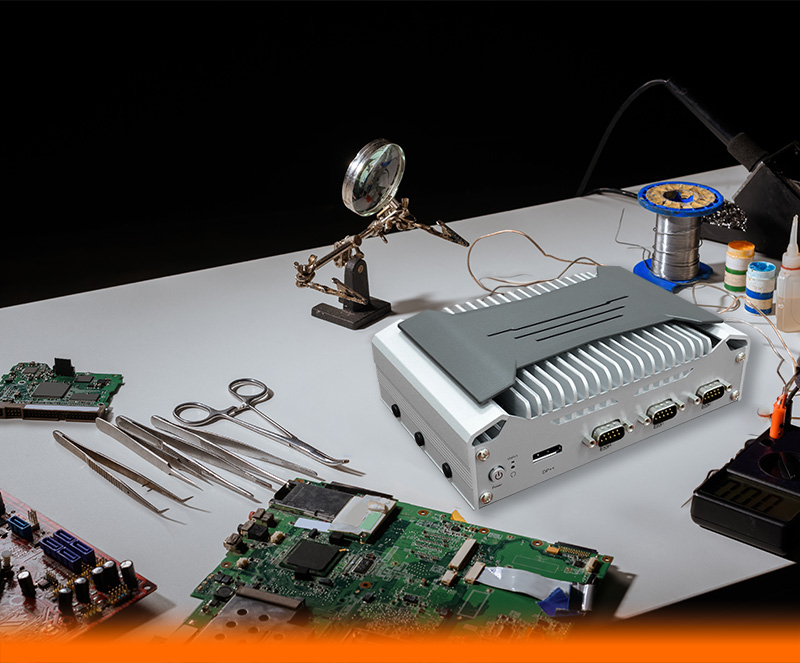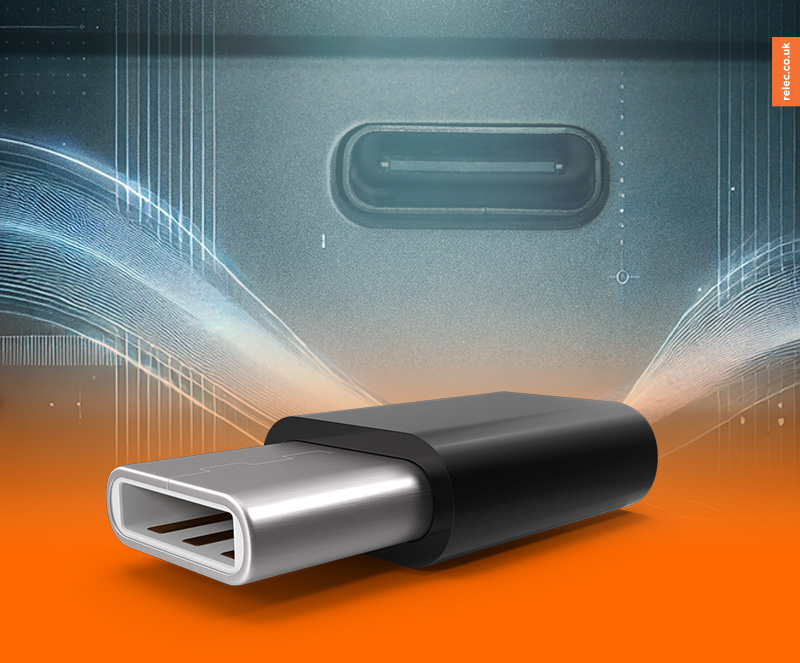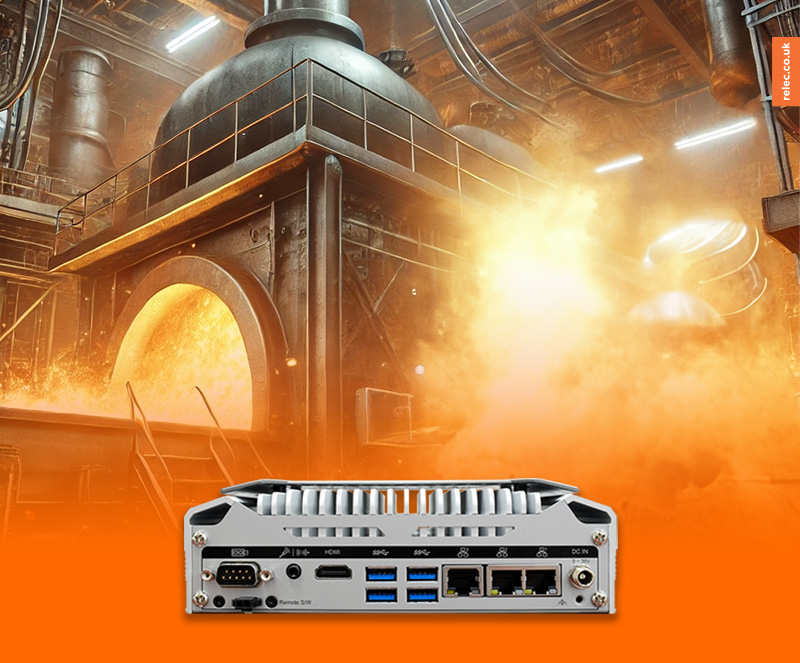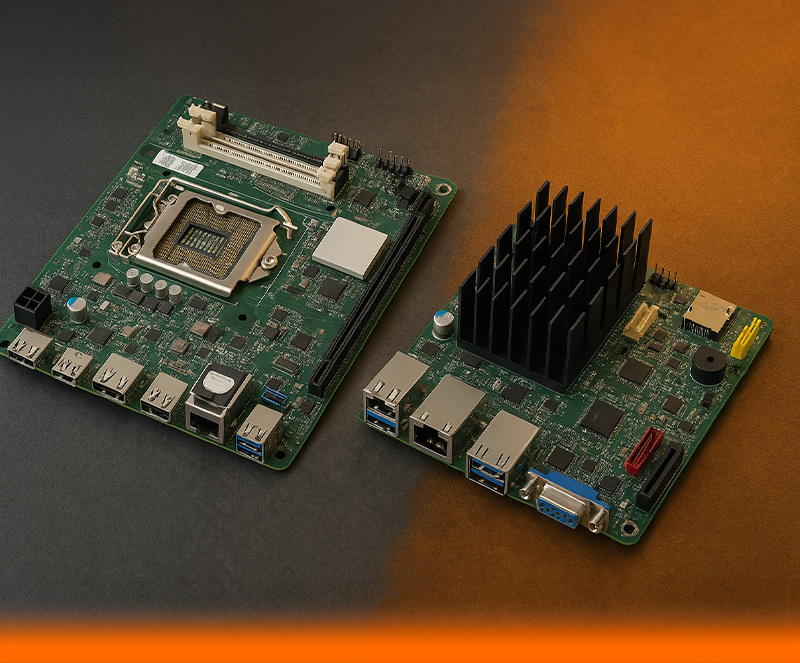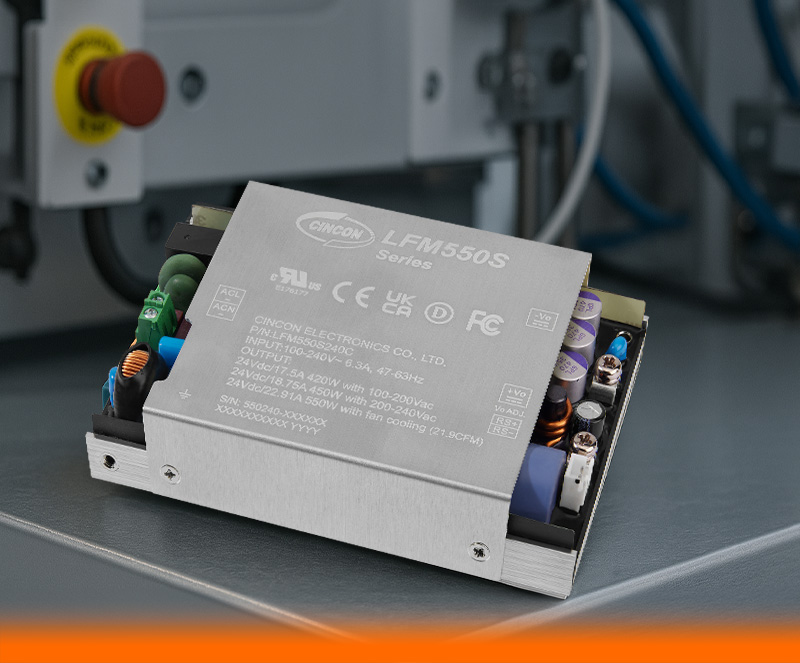Power Supply Efficiency – What You Really Need to Know
7th March 2023Share This Post
Share This Post
What is efficiency?
The power supply efficiency is defined as the ratio of the useful energy that is delivered to the load divided by the total energy consumed by the source. In other words, it is a measure of how well a power supply converts the incoming electrical energy into useful output energy, while minimizing energy losses in the form of heat, electromagnetic radiation, and other forms of waste.
The efficiency of a power system is defined as:
Ƞ = Input Power / Output Power
And maybe more importantly…
Dissipated heat = Input power – Output Power or = Output Power * (1- Ƞ)
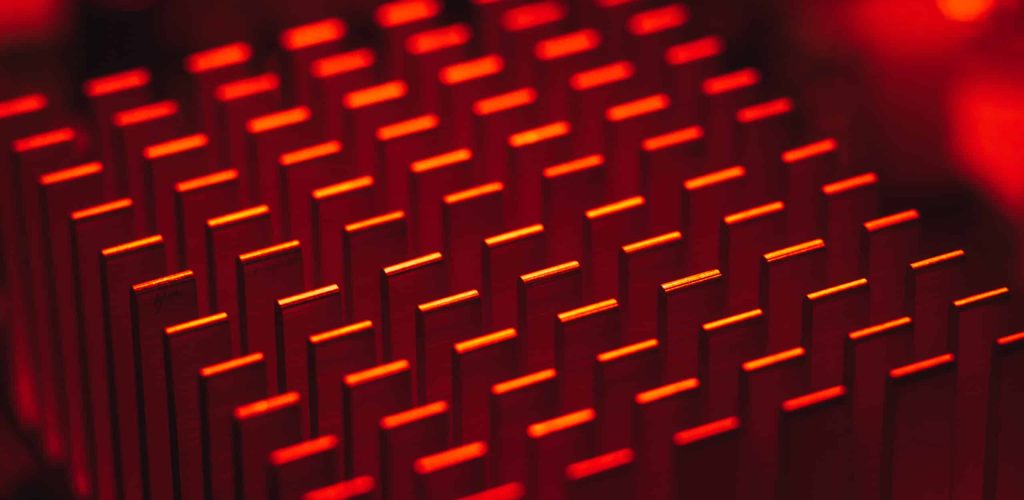
Is this just about being green then?
No, but it is a key issue. Having a power supply run at high efficiency levels is important for 3 key reasons:
- High power supply efficiency means that less energy is lost in the form of waste, which in turn results in lower energy consumption, lower electricity bills, and a reduced carbon footprint
- Increased Reliability: High-efficiency power supplies generate less heat and are less likely to overheat, which can result in improved reliability and longer lifespan. As a general rule the useful life of electronic components halve for every 10 degrees rise in temperature so keeping losses low and efficiency high is key to a reliable product.
- Improved Performance: Thermal variations will also affect the stability of the power supply, leading to wider variations in output voltage and even the risk of damage as components move outside of expected tolerances.
Sounds like there is more to this than meets the eye?
A number of factors affect the efficiency of a power and whilst its headline figure might be a good indication of its quality, it doesn’t tell the whole story. Some of the factors that affect efficiency are:
- Input Voltage – Power supplies often have an input range which allows it to be used globally – ie at 230Vac in Europe and 110Vac in USA. However there are always compromises either working with higher input voltages / lower input currents (Europe) or low input voltages and higher currents (USA). The plot below shows an efficiency curve for a typical ac dc converter, that is clearly more efficient when operated in a European environment.
- Output Power – Efficiency is typically highest at the power levels the product was designed for. Our goal is to have component temperatures as low as possible across all conditions. It could be that the losses at 50% load are similar to those at 100%, which is not conducive to increased reliability.
- Temperature – Higher operating ambient temperatures can have positive and negative affects on efficiency of power supplies. Key elements are switching transistors (MOSFETs) which will see losses rise as temperatures increase, and diodes where losses reduce as forward voltage drops reduce. As a general rule though, increasing temperature is not going to be beneficial to our system
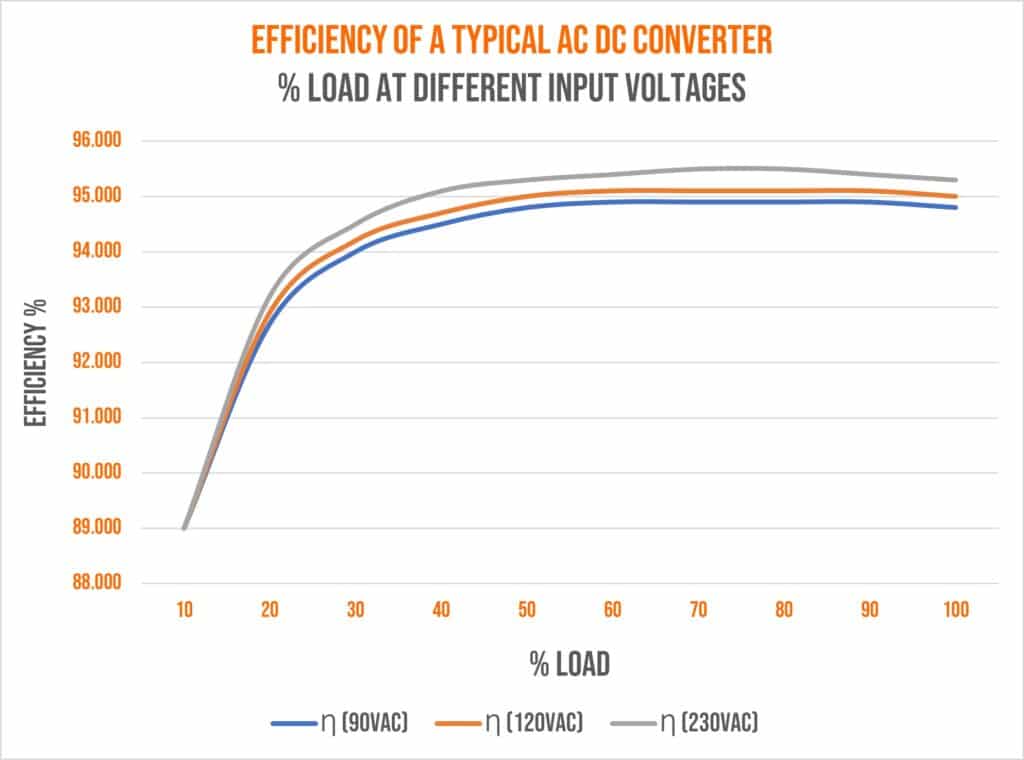
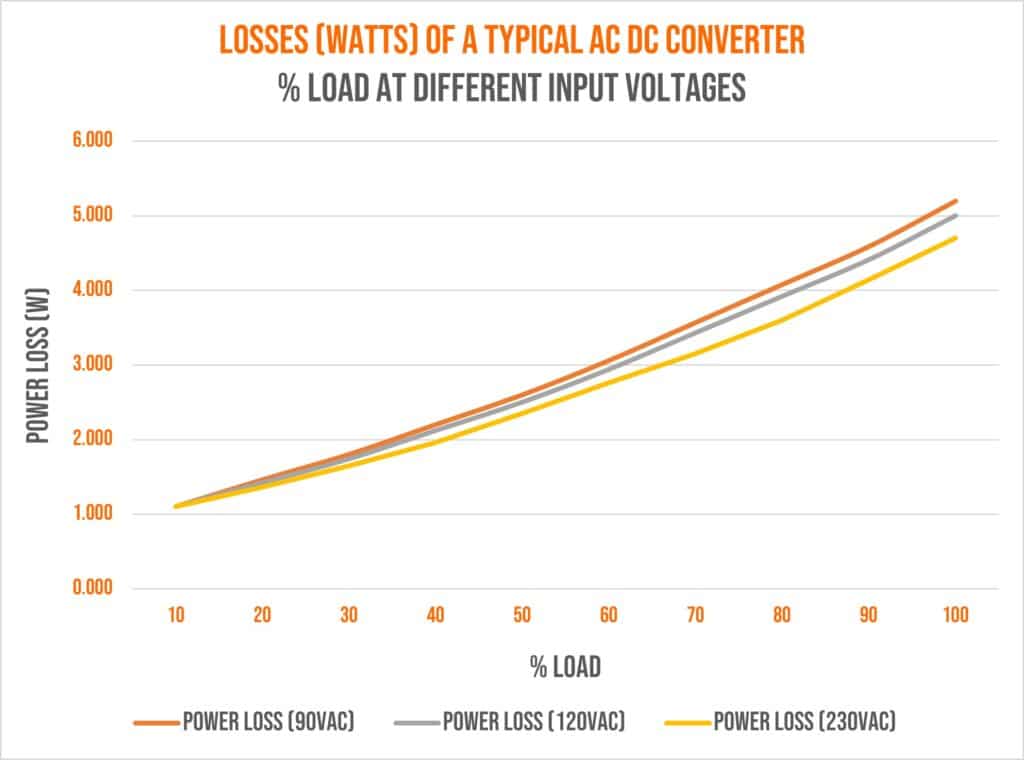
I get the picture and it all sounds cool to me. What else can I do to optimise efficiency?
- Choose a product that is optimised for the region it is working in. Whilst most ac dc converters now have a universal input range, digging deeper into the spec might show advantages at different input voltages.
- Understand the load profile of what you are powering. Most power supplies have a good headline efficiency at their rated load, but this can often fall as the load drops. You might need say 150 Watts at start up but only 100 Watts for normal operation. In these cases you might be better served with a product with a peak power capability.
- Temperature, Temperature, Temperature – Try to keep your power supply as well ventilated as possible. It is always going to be one of the biggest generators of waste heat in your system. Make sure it has good airflow or if conduction cooled, is mounted on an effective heatsink.
Here at Relec Electronics we have been helping our customers select the optimal power supplies for their applications. Power supply efficiency is a crucial aspect of any electronic system, and is often left to the last minute. The wrong power supply can have a significant impact on energy costs, reliability, and performance of your system. By understanding the factors that affect power supply efficiency and taking steps to improve efficiency, it is possible to achieve better results in terms of energy efficiency, system performance and reliability.
RECENT articles
SHARE
sign up for our newsletter
Enter your email address below
LET’S MAKE THIS EASY. CALL 01929 555 700
why choose relec?
-
Faster
Our aim is to get back to you with an initial response within the hour.
-
Attention to detail
We pride ourselves on getting you the right product, at the right price and on time.
-
New ideas
We are constantly looking for latest technology and products for your applications.
-
Beyond standard
It’s not just about the product. Our service goes way beyond the norm.
-
Easy
We want to make your life as simple as it can be. Call us to find out what we can offer.





